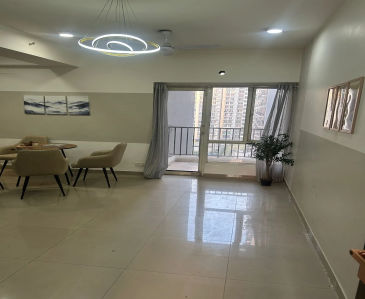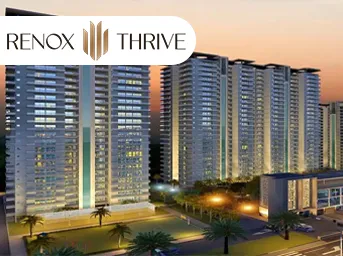Real Estate Budget 2024 | Prioritize infrastructure and a new middle-class housing program
By Bricksnwall | 2024-02-03

Updated
infrastructure will support growth in Tier 2 and Tier 3 cities, while a new
housing program aimed at the middle class will increase both supply and demand
for residential real estate.
The
government will introduce a housing scheme for the middle class to buy or build
their own homes, according to Finance Minister Nirmala Sitharaman's
announcement on February 1. The PMAY rural scheme will see the construction of
nearly 2 crore homes, a move that is anticipated to advance the Housing for All
agenda.
The interim
budget, according to real estate experts, concentrated on affordable housing,
infrastructure, and green energy initiatives while ignoring the real estate
sector's main demands, such as granting industry status and tax incentives for
homebuyers like raising the Section 24 deduction limit on home loan interest.
Finance
Minister Nirmala Sitharaman declared in the interim Budget for 2024–25 that the
government will implement a program to assist worthy middle-class individuals
"living in rented houses, or slums, or chawls and unauthorised
colonies" in purchasing or building their own homes.
In addition,
the finance minister stated that under the ongoing PM Awas Yojana (Grameen), 2
crore more houses will be constructed for the impoverished in rural areas over
the course of the next five years.
Government
figures show that the funding for the Pradhan Mantri Awas Yojana (PMAY), the
government's flagship programme, has grown by 49% to ₹80,671 crore. According
to updated projections, ₹54,103 crore was allotted for 2023–2024.
The Interim
Budget 2024–2025 allots ₹54,500 crore for PMAY Rural. According to last year's
updated estimates, it was ₹32000 crore. PMAY (Urban) has been allocated
₹26170.61 crore for the fiscal year 2024–2025. Last year's revised estimates
put it at ₹22103.03.
There is a
21% decrease in funding for the missions of smart cities and urban renewal.
According to updated estimates, ₹13,200 crore was set aside for 2023–2024, and
₹10,400 crore for 2024–2025.
According to
updated projections, ₹2550 crore was set aside for the Swachh Bharat Mission;
however, that amount has since been raised to ₹5000 crore.
There has
also been a nine percent increase in funding for Metro Projects. According to
updated estimates, ₹19508 crore was set aside for 2023–2024, and ₹21336 crore
has been allotted for 2024–2025.
Plan
for middle-class housing to increase demand
Experts
predicted that the focus on social housing for the EWS and LIG categories would
enhance the desire for and feelings surrounding home ownership, as well as
increase the market for cheap housing.
"As
part of the Housing for All plan, the government's announcement of a program
to help worthy middle-class individuals become homeowners is praiseworthy. In
addition to meeting a critical demand for our youthful population, this also
ushers in a new age of growth for the housing industry, promotes inclusivity,
and guarantees that homeownership becomes a reality for a greater segment of
our society, according to Aditya Virwani, COO of Embassy Group.
"In the
long run, the domestic real estate market will benefit from the initiatives for
more robust urban and sustainable development. The government's commitment to
housing for all is demonstrated by the rise in funding allocated for urban and
affordable housing, according to Gaurav Pandey, managing director and CEO of
Godrej Properties Ltd. and co-chairman of the FICCI Committee on Urban
Development and Real Estate.
Put
infrastructure first to increase demand for homes and businesses.
The FM
stated in her Budget 2024 speech that the nation's middle class is growing
quickly and that urbanization is happening at a rapid pace. "NaMo Bharat
and Metro Rail have the potential to spark the necessary urban transformation.
Major cities emphasizing transit-oriented development will encourage the
expansion of these systems.
The
government has increased funding for infrastructure, particularly in Tier 2 and
Tier 3 cities, through the interim budget.. The construction of homes and
businesses in these locations will probably benefit from this. In reality, one
of the primary causes of India's recent economic growth has been the
government's enormous expenditure on infrastructure, and this benefit will
continue to flow in the near future, according to Anshul Jain, Cushman &
Wakefield's Managing Director for India and Southeast Asia and Head of APAC
Tenant Representation.
"The steadfast
dedication to infrastructure development serves as a fundamental element in
promoting economic expansion, ultimately having a palpable effect on the real
estate industry." The robust YoY increase in infrastructure spending to
more than ₹11 lakh crore, according to Colliers India CEO Badal Yagnik,
"signals a steady and significant wave of upcoming developments and
opening of vast opportunities for all stakeholders, including real
estate."
Tourist
locations' retail and hospitality industries stand to benefit.
The FM added
that there are a ton of chances for local business in the tourism industry,
particularly in spiritual tourism. States will be urged to develop famous
tourist destinations thoroughly, branding them, and promoting them
internationally. There will be a system in place for classifying the centers
according to the caliber of their amenities and offerings. States will be given
long-term, interest-free loans to finance this kind of development on a
matching basis.
The
government's renewed attention on promoting tourism through various circuit
activations and prospective state-level incentives has the potential to yield
major benefits for the hotel and retail industries in tourist hotspots. uttered
Jain.
The announcement on developing and improving tourism hubs and a ranking system based on the creation of supporting infrastructure, according to Samantak Das, Chief Economist and Head of Research & REIS, India, JLL, will sharply focus development related to hospitality while generating demand and opportunity for related real estate development (vacation homes, second homes, commercial and social infrastructure) in such locations. This also applies to enhancing island tourism.
Source
: Hindustan Times




